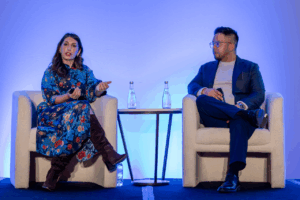 “Data-Driven Thinking” is written by members of the media community and contains fresh ideas on the digital revolution in media.
“Data-Driven Thinking” is written by members of the media community and contains fresh ideas on the digital revolution in media.
Today’s column is written by Holly Maust, director of analytics at Moxie.
Facebook measurement is no longer as easy as reporting how many likes, fans and shares your brand received. Data sophistication and intuition now play bigger roles, especially after the algorithm shift late last year.
One of the best things about Facebook analytics: the amount of data now available to see and optimize from. But when marketers want to optimize content and understand their audience, they should look at owned, earned and paid media on Facebook collectively. There can no longer be silos with data. That’s why Facebook purchased the Atlas platform and chose great preferred vendors like Optimal, which is now part of Brand Networks.
Paid data allows us to identify what content drives our current audience with promoted post buys. It helps us to understand who our potential audience is with bigger campaigns. We can learn and optimize our content quickly based on what other pages this audience finds interesting and the type of content that directs them to whatever engagement we want them to have. Overlaying paid social data with paid search and traditional display results arms you with knowledge of what motivates your current and potential consumer. This type of insight can now drive your content marketing anywhere, including Web, email, social and video.
The fact that Facebook has broken out engagement in more detail in Insights clearly indicates that it wants brands to provide its audience with better content. If your content isn’t “juicy” enough, it’s not going to show up in someone’s news feed – except if you pay for it.
There are multiple tabs within the Insights data that can tell you how your posts are consumed. It’s important to understand whether your audience is doing what you want them to do, whether it’s to click a link, or share, like or comment on a post, or all of the above. It’s dissecting each post and understanding what made one successful over the other. Then we must take those learnings and test them on future posts.
Avoid The Negative
One very important category that brands are often afraid to look at is the negative component in Insights. A brand’s audience could be hiding photos or links that a brand is posting, for example, or worse: unliking the brand page after that.
But I like to look at these negative metrics and audience response rates on a brand’s page to see if there are any patterns. A negative metric can be turned into a positive recommendation that can change the direction of engagement on the entire page. Take, for example, a page that continually receives unlike page clicks when the words “Like if …” are placed at the beginning of the posts. Simply tweaking the copy can drive engagement up and the number of unlikes down. It is something that can’t be overlooked when considering Facebook analytics.
When you listen to the conversation on Facebook brand pages using tools like Crimson Hexagon, you start to find that brand advocates, reoccurring positive sentiment topics and the percentage of fans engaging with the page increase each month. Marketers should look at this type of data to understand what makes their advocates tick, along with how to convert the masses into this audience.
Honor Thy KPI
KPIs that can’t be overlooked involve how Facebook helps drive traffic, content consumption and sales to a brand’s website. Closing the loop on business objectives is important, and analyzing the Web data from Facebook can make your content perform the way you want it to.
Marketers using Google Analytics need to ask several questions when measuring the data available. What were the keywords the visitors used to find your content? Where are visitors from? Did they convert? What was their path on the site, and how long were they there? Did they use mobile devices? These are just a few things that should be taken into consideration when optimizing your Facebook page and other content.
Facebook has created a platform that demands you to be smart with every post. The only way to learn about how well you’re using the network is through benchmarking and forecasting KPIs. If you identify and track the metrics that are important to you, you’ll have the ammunition needed to make the right moves.
Follow Holly Maust (@hmaust), Moxie (@MoxieUSA) and AdExchanger (@adexchanger) on Twitter.












